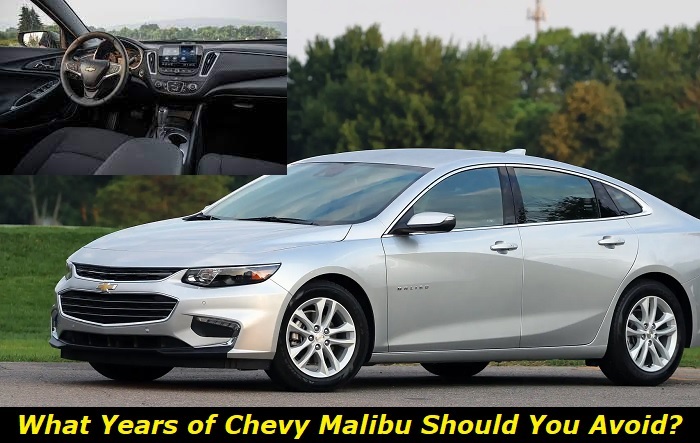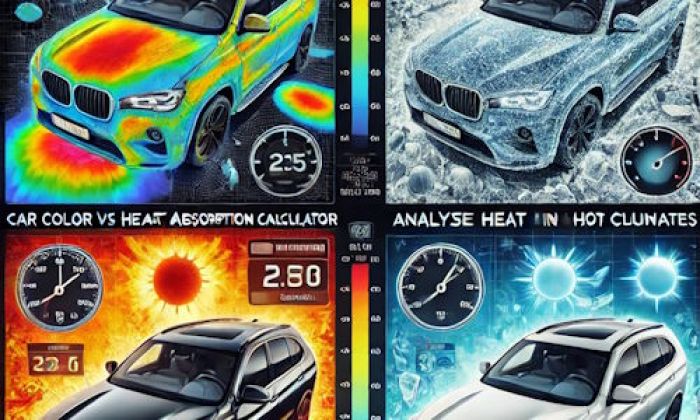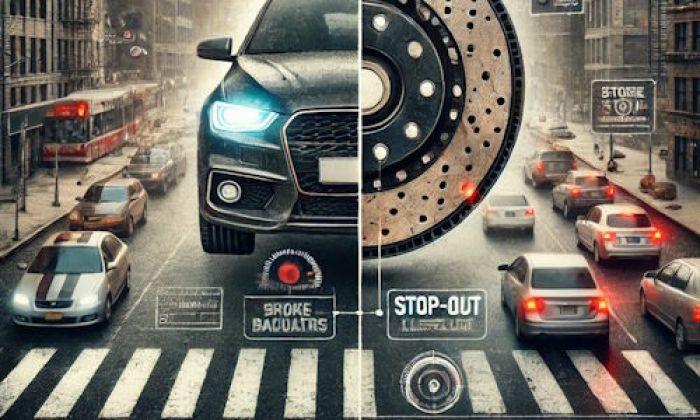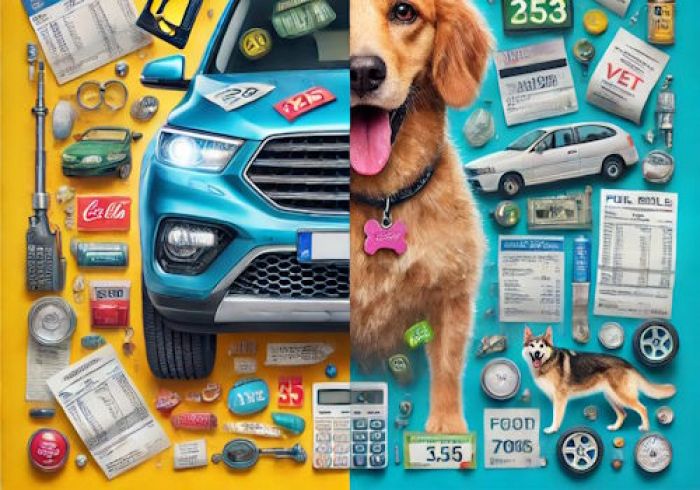In the world of used cars, making an informed choice can mean the difference between a dependable daily driver and a regrettable money pit. This is particularly true for the Chevy Malibu, a mid-size sedan that's been a part of Chevrolet's lineup for decades.
The Chevrolet Malibu is known for its sleek design, comfort, and relative affordability. However, it is also known for several bad production years that prospective buyers should be wary of.

These specific models, plagued by various mechanical and design flaws, represent the worst return for your money when in the market for a Malibu. They are the years where Chevrolet, missed the mark in terms of reliability and overall owner satisfaction. In this deep dive, we'll pinpoint these troublesome models, in an effort to help you make the correct buying decision
The Early 2000s Were A Rocky Start For The Malibu
The early 2000s marked a period of significant challenges for the Chevrolet Malibu, particularly the models from 2004 to 2007. This era represented a pivotal time for Chevrolet as they attempted to redefine the Malibu in a rapidly evolving automotive market. However, despite their efforts, these models were soon flooded by customer disappointment due to a variety of reliability issues.
One of the most critical problems faced by the Chevrolet Malibu models produced during these years was the steering system. Many owners reported unexpected power steering loss, a grave concern that raised serious safety questions. As you can imagine, this issue could lead to a dangerous situation on the road. Therefore, it prompted several recalls and a considerable amount of negative press for Chevrolet.
Electrical system problems were another major headache for owners of these years of Chevrolet Malibu. Malfunctions in the electrical system led to abnormal behaviour in various components, from the dashboard gauges to the audio system. These glitches were not only frustrating but also added to the overall lack of reliability of the Chevrolet Malibu.
Interior build quality was yet another area where these years of Malibu fell short. Many owners complained about the subpar materials used, which wore out prematurely, leading to a less than satisfactory cabin experience. This was particularly disappointing for those who expected the durability and quality typically associated with the Chevrolet brand.
Lastly, Chevrolet Malibu models made between these years were criticized for their lacklustre performance. The engines, though adequate, did not offer the refinement or efficiency that was becoming standard in the segment. This lack of performance innovation further cemented these years of the Chevrolet Malibu as ones to avoid
The 2010s Weren't Much Better
The beginning of the 2010s was an opportunity for Chevrolet to improve the Malibu. However, this hope was short-lived due to a range of issues, particularly in the 2010 to 2012 models. Despite some aesthetic and technological updates, these models, once again, failed to impress in terms of reliability and overall owner satisfaction.
The 2012 Chevy Malibu, in particular, was perhaps the most problematic of them all. Owners frequently reported significant engine issues, the most alarming of which was excessive oil consumption. This problem drastically reduced the engine's longevity and performance. Alongside this, the timing chain in these models was prone to failure, a major fault that could lead to catastrophic engine failure and expensive repairs. These issues, unfortunately, were not isolated incidents but rather widespread and well-known problems that tarnished the reputation of the 2012 Chevrolet Malibu.
Another major concern with these models was the subpar transmission performance. Many drivers experienced jerky shifting, delays in acceleration, and in some cases, complete transmission failure.
Just like the previous years, these Chevrolet Malibu models were critiqued for their uninspiring driving dynamics. They lacked the responsiveness and agility that were becoming standard in other mid-size sedans of the era. This lack of driving excitement further detracted from the appeal of the Malibu, leaving much to be desired in terms of driver engagement.
Things Didn't Improve In 2013
The year 2013 was also pretty bad for the Chevrolet Malibu. A completely redesigned model was introduced with the hope of rejuvenating the lineup and addressing past issues. However, this year of Chevrolet Malibu ended up being a step backwards, disappointing both critics and consumers alike.
One of the most glaring issues with this model was the reduced rear seat space. In an effort to modernize the design, Chevrolet altered the dimensions, resulting in a cramped backseat area. This was a significant drawback for a family sedan, where passenger comfort is key.
Furthermore, reliability issues persisted. This time they impacted the air conditioning system. Many owners reported problems ranging from ineffective cooling to complete system failures. Oh, and the transmission problems also lingered, with reports of rough shifting, delays in engaging gears, and, once again, total transmission failure.
In terms of aesthetics and technology, while the 2013 Malibu did make some advances, these improvements were overshadowed by the car's persisting flaws. The infotainment system, though updated, was often criticized for being unintuitive and slow to respond. Additionally, the exterior design, while modern, did not do enough to distinguish the Malibu in a crowded market of mid-size sedans.
The Better Alternatives
While it's important to be aware of the Chevy Malibu models that missed the mark, the point of this article is to help you distinguish the years when Chevrolet got it right. Post-2016 models of the Malibu show that Chevrolet learned from past mistakes and improved upon the Malibu. These later models represent a significant leap forward in terms of reliability, technology, and overall quality, offering a much better return on investment for buyers.
The redesign in 2016 finally made the Malibu a solid choice. It marked a shift towards a more stylish and aerodynamic design, aligning with the modern consumer's aesthetic preferences. The exterior was not only sleeker but also featured improved aerodynamics, contributing to better fuel efficiency and a quieter ride. The interior received a much-needed overhaul as well, with higher-quality materials, a more spacious cabin, and an intuitively designed dashboard. This shift addressed many of the criticisms of previous models, particularly regarding cabin comfort and build quality.
Under the hood, the newer Malibus came equipped with more efficient and powerful engine options, including turbocharged variants. These engines offered a balance of performance and fuel economy that was lacking in earlier models. The transmission systems in these vehicles were also significantly improved, providing smoother shifting and more reliable performance.
Furthermore, these models drastically improved the Chevrolet Malibu's technology. The updated vehicle now featured Chevrolet's latest infotainment system, which offered better connectivity, more features, and a more user-friendly interface. Safety technology also saw major advancements, with more standard and available driver-assist features, making the Chevrolet Malibu models produced during these years some of the safest vehicles in their class.
In summary, while the Chevy Malibu has had its fair share of problematic years, the post-2016 models showcase Chevrolet's ability to bounce back with superior offerings. These later models are not just improvements but are examples of what the Malibu should have always been - reliable, stylish, and technologically advanced. For those considering a used Malibu, these are the years to focus on, representing the best of what Chevrolet has to offer in the mid-size sedan market.
About the authors
The CarAraC research team is composed of seasoned auto mechanics and automotive industry professionals, including individuals with advanced degrees and certifications in their field. Our team members boast prestigious credentials, reflecting their extensive knowledge and skills. These qualifications include: IMI: Institute of the Motor Industry, ASE-Certified Master Automobile Technicians; Coventry University, Graduate of MA in Automotive Journalism; Politecnico di Torino, Italy, MS Automotive Engineering; Ss. Cyril and Methodius University in Skopje, Mechanical University in Skopje; TOC Automotive College; DHA Suffa University, Department of Mechanical Engineering






Add comment